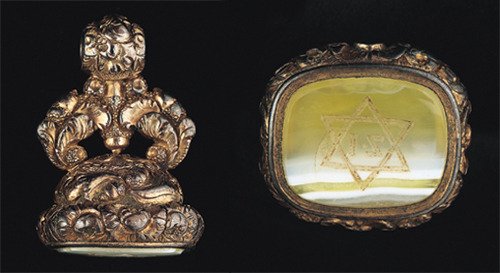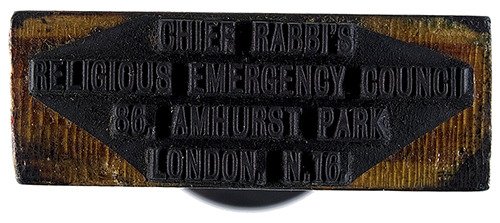Obscuratorial Finds – Why do we have so many… stamps?
by Ali Quine, Assistant Curator
With the continuous innovation of digital technology it is easy to forget that these things were not always around. Perish the thought
that we might have to make things by hand or, heaven forbid, write a letter. And
yet even before these modern developments alternative means of writing and
printing were being adopted, often in a somewhat lavish fashion.
Seals – In the 19th century sealing letters with wax was
considered good practice for formal or official correspondence. Seals often
consisted of a person’s monogram or family crest, with different coloured wax
used for specific occasions – red for business, black for mourning, pink for
congratulations and white for weddings.

This bronze-coloured metal seal belonged to the Jewish
author Israel Zangwill, and its flamboyant design certainly gets my seal of
approval. With an ornate handle and yellow semi-precious stone, the surface for
stamping is incised with a Star of David and the initials ‘I’ and ‘Z’ in reverse.
Stamps – Another custom commonly used in letter writing is stamping
the envelope with a return address. Using a stamp instead of writing by hand
makes a good first impression, and ensures eligibility and efficiency
particularly when sending letters in bulk.

This stamp reads ‘CHIEF RABBI’S RELIGIOUS EMERGENCY COUNCIL
86, AMHURST PARK LONDON N.16.’ The Chief Rabbi’s Religious Emergency Council
was established in 1938, and helped rescue and care for hundreds of Austrian
and German Jews escaping Nazi persecution.
Plates – As well as personal letters and documents, other
mass-produced texts had to be made without the luxuries of the modern printing
press. One such method used to overcome this difficulty was printing plates.
These are usually made of metal, plastic, rubber or paper, and transfer an image
to paper or other substrates.

This printing plate was used to produce the programme for a
performance of Madam Butterfly, presented by ‘Food for the Jewish Poor’ at the
Sadlers Wells Theatre on Wednesday 14 December 1966. The back of the plate is
dark green, and the front has a raised gold negative image of text and a scene
from the play.